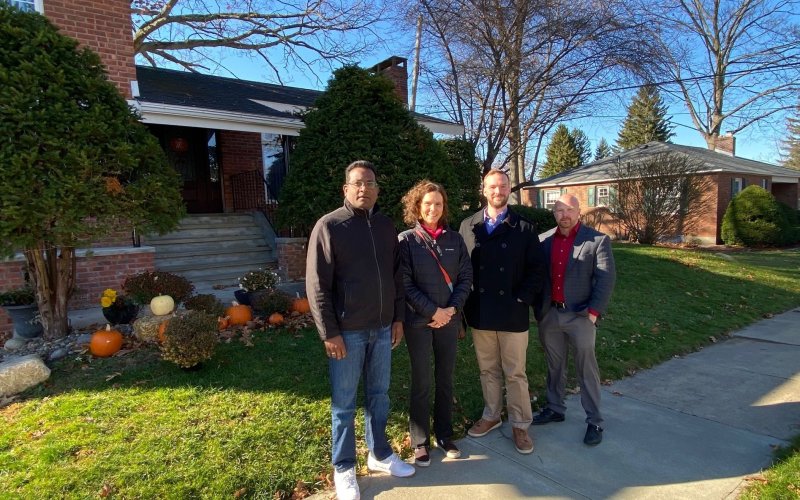Study Finds Immigration Does Not Impact Crime, and Homeownership Corelates to Decreased Theft and Homicide

ALBANY, N.Y. (Nov. 17, 2022) — A study of Guyanese immigration to Schenectady found that increases in foreign-born population did not affect neighborhood violent crime or property crime, and that increased homeownership, among all residents, was associated with declines in homicide and motor vehicle theft.
Tyler Bellick, a doctoral student in sociology and the principal investigator of the study, grew up in Schenectady and was a student there in the early 2000s when the mayor at the time, Albert Jurczynski, was actively recruiting members of the Guyanese community in New York City to become homeowners in Schenectady. “I have always found this story fascinating — a Republican mayor proactively recruiting a non-white immigrant group to his city and enlisting them to assume responsibility for and restore the city’s abundance of dilapidated and vacant housing,” Bellick said.
His study, “Guyanese Immigration, Homeownership, and Crime in Schenectady, NY: 2000-2017,” was published last month in the peer-reviewed journal City & Community.
As a grad student, Bellick used his concentration in sociological criminology and urban sociology to develop a research proposal examining changes in neighborhood crime in Schenectady over time. One of his advisors, Associate Professor Samantha Friedman, who is a coauthor on the study, suggested he focus on the relationship of Guyanese immigration and neighborhood crime in the city.
The focus was timely, Bellick said: “This project kicked off during the Trump presidency, and the immigrant-crime relationship was one of the most contentious public policy debates in the nation. Despite evidence to the contrary, prominent politicians and public commentators were justifying anti-immigrant policy proposals by asserting that immigrants were a crime prone population. This historical moment provided an opportunity for our envisioned study to contribute to the relatively new scientific evidence base on this topic of social importance.”
Most existing studies of the relationship between immigration and neighborhood crime focused on Latino immigration, and on large cities, Bellick said, adding that most have found no significant change in neighborhood crime associated with an influx of such immigrant groups. Bellick’s study, which was co-authored with Friedman, Michael Barton (an associate professor at Louisiana State University and a graduate of the UAlbany Sociology Department) and Matthew Douglas (of the Schenectady Police Department), was unique on three fronts: It studied a non-Latino immigrant group, focused on a small city, and considered the relationship between homeownership and crime.
“Our finding that increases in the foreign-born Guyanese population was not associated with changes in crime was not surprising, given that this is the most common finding in studies that examine the immigrant-crime relationship,” Bellick said, adding that the research also found increases in homeownership were "significantly associated with declines in some crime types, including murder.” Friedman pointed out that “the latter finding of the link between homeownership and crime is a novel finding that has not been examined in much previous research.”
The study combined crime data from the Schenectady Police Department with data from the U.S. Census and American Community Surveys in four periods stretching from 2000 to 2017 to assess the relationship among changes in the percent of Guyanese population, homeownership and crime types.
The study found that small cities are uniquely positioned to enact programs, such as offering city-owned vacant housing at discounted rates, that can target social problems, increase tax revenue and decrease crime.
“In short, not only are new immigrant groups unlikely to raise neighborhood crime — contrary to common perception — but initiatives like the mayor’s that proactively recruit immigrants to a community may help municipalities and be effective strategies for restoring vacant structures, putting houses back on the tax rolls, and sparking others to become homeowners beyond the immigrants themselves, which taken together can result in declines in neighborhood homicide and other crimes (an unintended consequence of Mayor Al’s plan),” Bellick said. “Instead of deterring immigrants from settling in cities, cities likely benefit from recruiting them, especially smaller cities like Schenectady where such immigrants have gone on to secure elected positions at every level of local government including the school board, city council, and county legislator. Immigrants strengthen rather than weaken communities."




